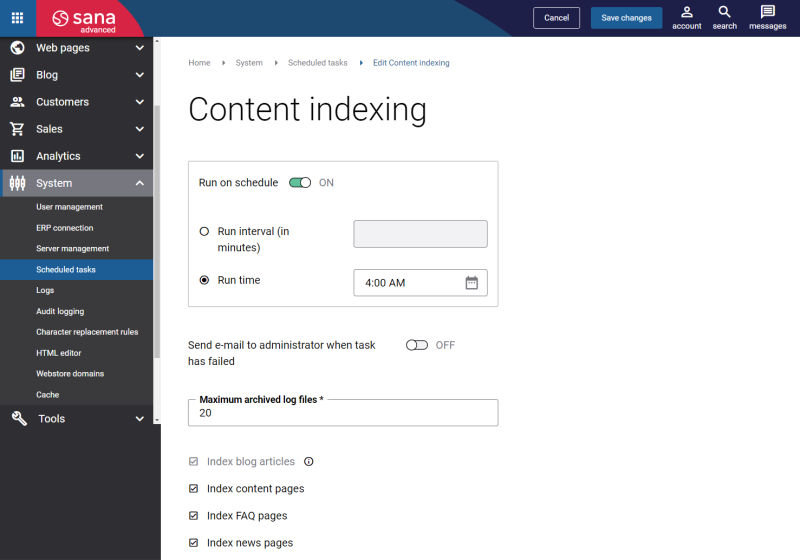Publish Blog Articles
The new blog articles will be shown in the webstore only after they are published. For this purpose you need to use the Content indexing scheduled task. Also, you need to run the Content indexing scheduled task in case some changes were made to the already published blog articles if you need to show these changes in the webstore.
In Sana Admin click: System > Scheduled tasks.
